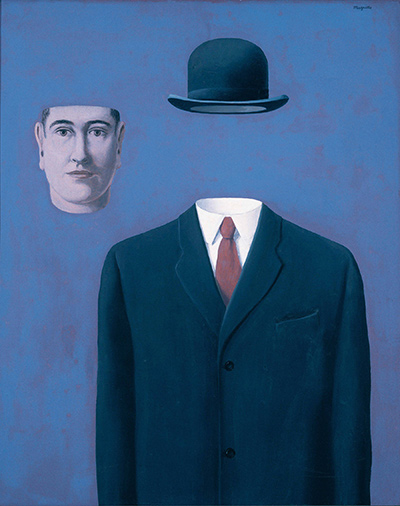A powerful paradox is the often the result of the illustrative quality of the artist’s pictures like The Pilgrim. He was good at creating images that provoke unsettling thoughts despite them being beautiful in their simplicity and clarity.
They are marvelously strange despite them seeming to declare they hide no mystery, as seen on The Pilgrim.
During his painting career, Magritte would use popular paintings created by other artists to put a surrealist twist on them. The Balcony is a good example of one of the works he did.
It was originally done by Edouard Manet and had the same name. In the piece, he uses coffins in place of the images. It was one of the ways the artist used to create a unique design and showcase his style.
Born in 1898, Rene Magritte was the son of a wealthy manufacturer. His mother committed suicide in 1912 by drowning herself in the River Sambre. The artist studied in Brussels at Academie des Beaux-Art.
Even though he was internationally acclaimed as one of the best surrealist artist, it was not until the 1950’s that he gained some form recognition and fame for his work. One of his best works was The Pilgrim, 1966.
Rene did his art by cultivation of an approach that did not go with the stylistic distractions in modern painting. He settled on an illustrative, deadpan technique unlike other artists such as Salvador Dali, Man Ray and Max Ernst, who experimented with new techniques.
This is one of the main reasons why his style clearly articulated the content of his works.
Magritte found repetition to be an important strategy as it not only encouraged him to come up with multiple copies of his greatest works, but also informed of his skill in handling of motifs with each picture.
Part of Rene’s interest in the idea may have been a result of Freudian psychoanalysis which mainly stands for repetition being a sign of trauma. At the same time, his commercial art may have had a part in prompting him to question the belief in original, unique works of art.




